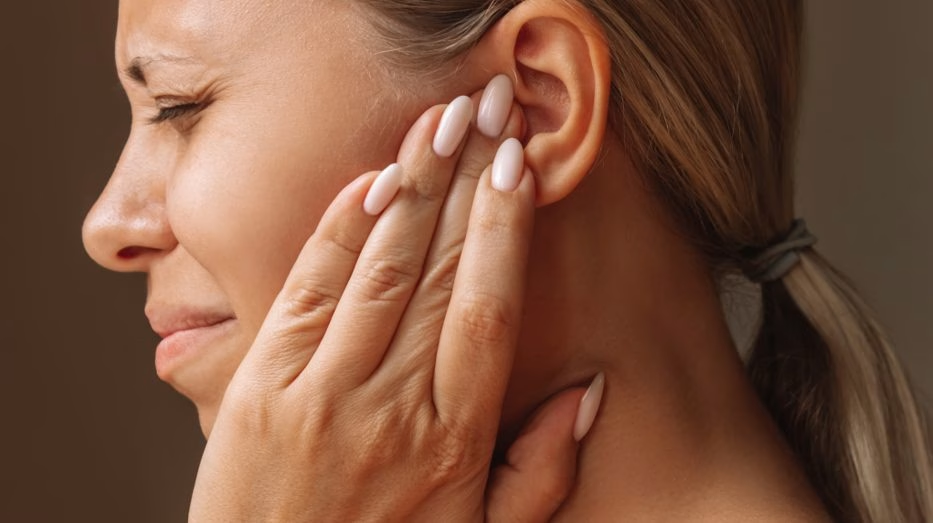
Swimmer’s ear, also known as otitis externa, is an infection that affects the outer ear canal, the passage leading from the outer ear to the eardrum. This condition often develops when water remains trapped in the ear after swimming, bathing, or showering, creating a moist environment that allows bacteria or fungi to grow. While it’s more common with frequent swimming, swimmer’s ear can occur at any time of the year. The infection causes discomfort and can lead to pain, redness, and swelling around the ear. If left untreated, swimmer’s ear may result in more serious complications, including the spread of the infection. Early detection and care are crucial for alleviating symptoms and preventing further complications. Here we will provide detailed information about swimmer’s ear causes, symptoms, and how these can be treated.
What are the Most Common Causes of Swimmer's Ear
Swimmer’s ear most often develops due to a bacterial infection, with Pseudomonas aeruginosa and Staphylococcus aureus being among the primary causes. This bacterium is commonly found in soil and water and can easily multiply in the moist environment of the ear canal. While bacteria are the most common cause, fungi such as Candida and Aspergillus can also contribute to the condition, and other factors may also play a role. Several triggers can increase the risk of developing swimmer’s ear:
1. Prolonged moisture in the ear canal
When water becomes trapped in the ear canal, after swimming, bathing, or even sweating, it softens and weakens the delicate skin lining. This warm, damp environment is ideal for bacteria or fungi to grow and spread, leading to infection. The longer the moisture stays inside the ear, the greater the risk of irritation and infection.
2. Minor injuries to the ear canal skin
The skin of the ear canal is thin and sensitive. Using cotton swabs, hairpins, fingernails, or similar objects to scratch or clean the ear can create small tears or abrasions. Even these tiny injuries can provide an entry point for bacteria, making the ear canal vulnerable to infection.
3. Certain Skin conditions
Individuals with chronic skin conditions like eczema or psoriasis are more prone to swimmer’s ear, as these conditions can cause breaks or inflammation in the skin.
4. Devices that block airflow
Wearing devices that fit inside the ear, such as hearing aids, earbuds, or earplugs, can limit the natural airflow in the ear canal. Without proper ventilation, moisture becomes trapped and accumulates over time, creating an ideal environment for bacterial or fungal growth.
5. Contact with contaminated water sources
Swimming in natural bodies of water, such as lakes, rivers, or poorly maintained pools, increases exposure to bacteria and other germs. If water containing harmful microorganisms enters and remains in the ear, the chance of infection rises significantly, particularly if the ear canal skin is already irritated or injured.
Top Signs of Swimmer’s Ear (Otitis Externa)
Recognizing the symptoms of otitis externa early can help prevent complications and ensure timely treatment. The symptoms usually begin mildly but can quickly worsen if the infection spreads.
1. Itching inside the ear canal
The earliest and most common sign is an itchy feeling deep within the ear canal. This itching may start off mild and barely noticeable, but tends to intensify as the infection progresses. The urge to scratch the ear can be strong, but doing so may worsen irritation and increase the risk of further injury or infection.
2. Pain in the ear, especially when touched or pulled
Pain is the main symptom. It may feel sharp, dull, or throbbing and is often made worse by movements such as pulling on the earlobe, chewing, or pressing on the outer ear. As the infection worsens, the pain can become constant and may even interfere with sleep or daily activities.
3. Redness and swelling of the outer ear
The skin around the ear canal and outer ear often appears red and inflamed as the infection takes hold. Swelling may cause the ear canal to narrow, which can further trap moisture and worsen the infection. In some cases, the outer ear may look puffy or feel warm to the touch.
4. Fluid drainage from the ear
At first, a clear, watery, and odorless fluid might drain from the ear. As the infection progresses, the discharge can become thicker, cloudy, or yellowish, and may develop an unpleasant smell. This fluid is a sign that the body is trying to clear the infection, but urgent care treatment is often needed to resolve it.
5. Hearing difficulty or fullness in the ear
Swelling and fluid buildup inside the ear canal can create a sensation of fullness or blockage, similar to having water stuck in the ear. This can muffle sounds and lead to temporary hearing difficulties until the swelling and infection subside.
6. Fever in more advanced cases
While fever is not always present, it may develop if the infection becomes more severe or spreads beyond the ear canal. A mild fever can be a sign that the body is fighting off an infection, indicating the need for prompt attention.
7. Swollen lymph nodes near the ear or upper neck
As part of the body’s natural immune response, the lymph nodes located near the ear or along the upper neck may become tender and swollen. This swelling reflects the body’s effort to contain and fight the infection.
Otitis Externa (Swimmer’s ear) Treatment Relief Options
Treatment focuses on clearing the infection, relieving pain, and preventing further irritation. With timely care, most cases of swimmer’s ear improve and cure within a few days to a week.
1. Cleaning of the ear canal
Before starting ear drop treatment, an urgent care professional may need to clean the ear canal. This cleaning helps remove excess fluid, discharge, debris, or earwax. The cleaning is performed carefully, using suction or gentle instruments to minimize the risk of further irritation or damage to the sensitive skin inside the ear canal.
2. Prescription ear drops
Urgent Care usually prescribes antibiotics or antifungal ear drops, which are commonly prescribed based on the cause of infection. These drops are most effective when the ear canal is clean and clear.
3. Pain management
Pain can range from mild to severe. Over-the-counter medications usually provide relief. In cases of severe pain, an urgent care professional may advise stronger pain relief options.
4. Keeping the ear dry
A crucial part of recovery is preventing more moisture from entering the ear canal during treatment. Avoid swimming or getting the ear wet during treatment. Use a shower cap or petroleum jelly-coated cotton ball while bathing to protect the ear and support healing.
Ear discomfort can be easy to overlook, but addressing it early makes a big difference. With the right medical attention, most cases are resolved quickly and effectively. If you're noticing discomfort or unusual ear symptoms, getting checked by a medical professional is the best next step. AFC Urgent Care Greenhouseroad Road - serving Houston and Katy area, offers trusted care without the long wait. Walk in at your convenience—we’re here to help you feel better, faster.

